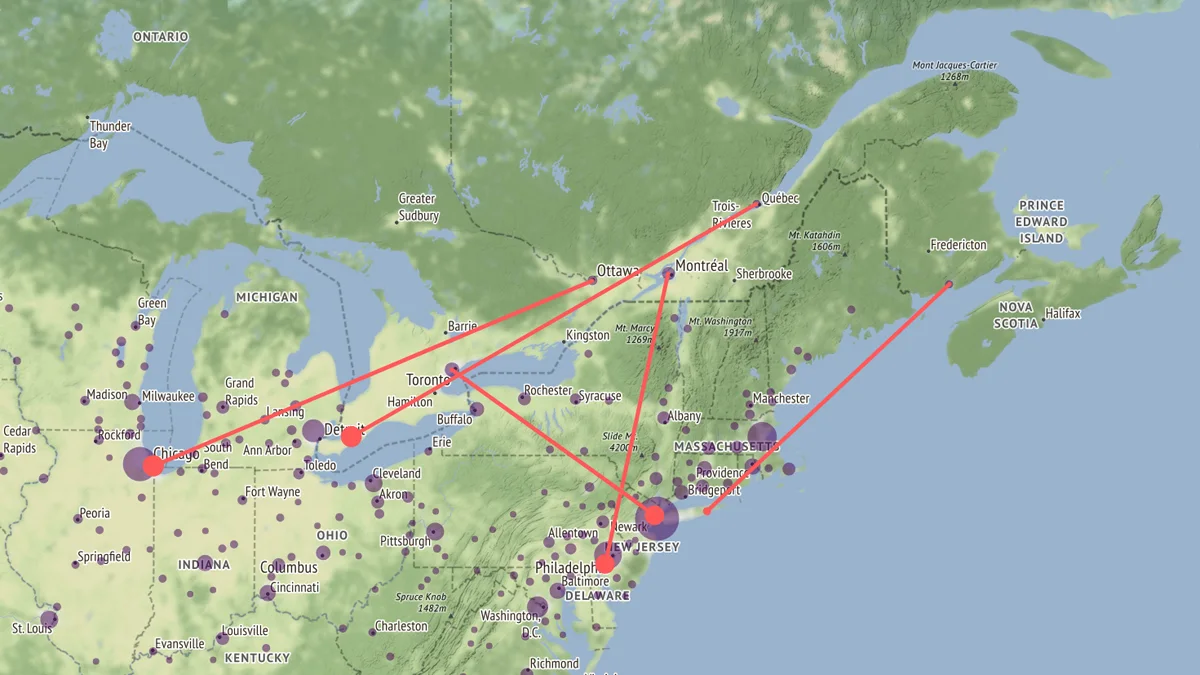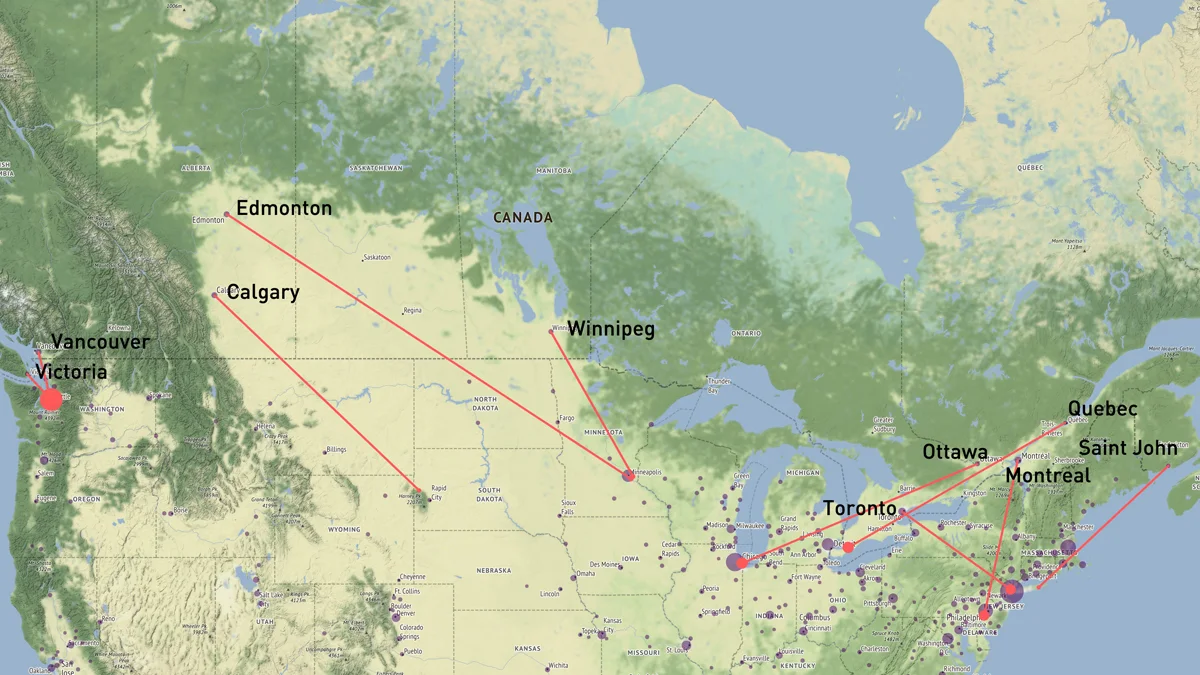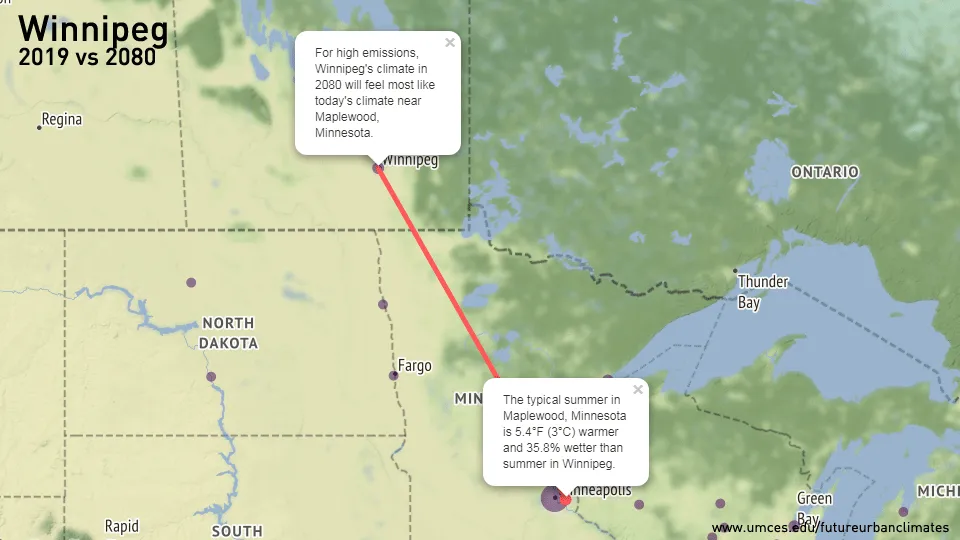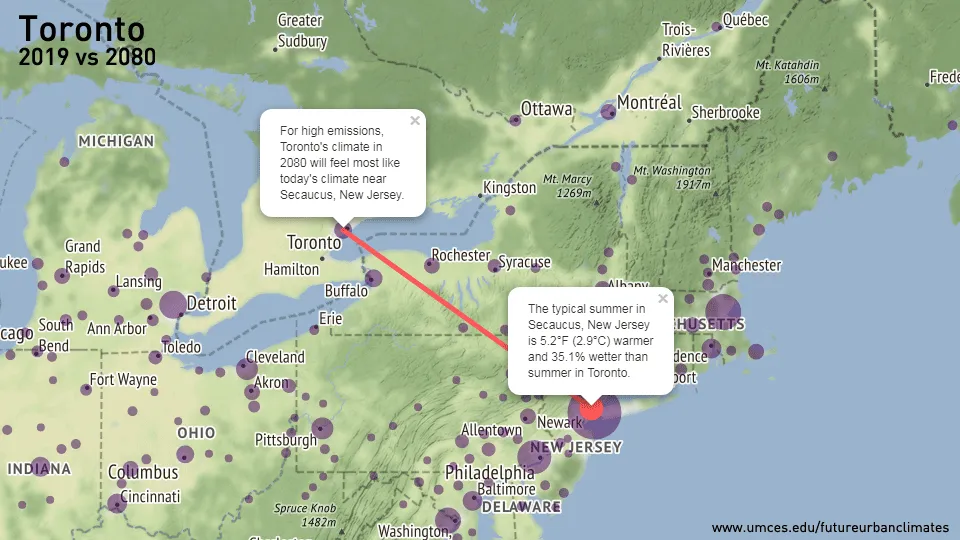
New map plots out how city climates will change in 60 years
How will the next 60 years impact your city, if we fail to take swift action on climate change? This new interactive map tells all.
No matter where we live, our cities are already feeling the impacts of climate change, as temperatures climb and incidences of weathe extremes become more common.
Now, a new study has looked ahead 60 years into the future, to track how these changes will continue to impact our homes, and it presents the data in a way we all can easily relate to.

Several major cities in Canada are linked with their future climates via this interactive map. Credit: Matthew Fitzpatrick/University of Maryland Center for Environmental Science
In a new interactive web tool, click on any highlighted city in Canada or the United States, and that city will instantly be linked to another location on the map.
What do these locations have in common? In 2080, just 60 years from now, the climate conditions in the city you chose will be the same as the climate conditions currently experienced in the city it was paired with.
"Under the business as usual emissions the average urban dweller is going to have to drive nearly 1,000 km to the south to find a climate like that expected in their home city by 2080," said Matt Fitzpatrick, of the University of Maryland Center for Environmental Science, who is one of the authors of this new study. "Not only is climate changing, but climates that don't presently exist in North America will be prevalent in a lot of urban areas."
In some cases, such as Vancouver, the differences seem small.

Vancouver's climate in 2080 will see warmer summers and winters, and significantly drier conditions, losing up to one-third of the region's annual precipitation. Credit: Matthew Fitzpatrick/University of Maryland Center for Environmental Science
A quick glance at the details (presented in the text bubbles), however, shows that BC's south coast not only gets warmer, year-round, but will also be significantly drier in the years to come, as the relatively drier climate of the U.S. West Coast shifts northward.
In other locations, the differences are much more extreme.

Winnipeg is expected to see temperatures that are currently common in Minneapolis, Minnesota, over 600 km to the south. Credit: Matthew Fitzpatrick/University of Maryland Center for Environmental Science
Winnipeg's bone-chilling winters are expected to warm by nearly 8°C in the coming decades!
While that may seem like a welcome change to locals who deal with some fairly extreme cold during winter now, even that much of a bump in temperatures will not completely drive winter weather away from the area. With the increase in precipitation, it will mean even more snow, and more extreme snowfall events.
Toronto, by 2080, should have conditions that are more like what is currently seen in Secaucus, New Jersey, which is located just across the Hudson River from the Island of Manhattan.

Toronto's climate shifts will mean more extreme heat days during the summer, and a nearly 50 per cent increase in the amount of rain, ice and snow during the winter. Credit: Credit: Matthew Fitzpatrick/University of Maryland Center for Environmental Science
The population of the growing metropolis of the GTA will likely experience the kind of heat waves that have become infamous in the New York City area during the summer, as well as even more extreme rainfall events, which will result in more (and more serious) flooding in a city that has already been struggling with increased flooding in recent years.
In addition to these issues in the summer, warmer winters will become greener, in general, but what is most likely is that this average increase in temperature will play out as pulses of alternating above-seasonal and seasonal (or even below-seasonal) weather passing through the region. Along with these roller-coaster swings in temperture, the nearly 50 per cent increase in precipitation will mean even more city-crippling extreme snowfall and feezing rain events, as well.
According to the University of Maryland Center for Environmental Science: "The study found that by the 2080s, even if limits are placed on emissions, the climate of North American urban areas will feel substantially different, and in many cases completely unlike contemporary climates found anywhere in the western hemisphere north of the equator. If emissions continue unabated throughout the 21st century, the climate of North American urban areas will become, on average, most like the contemporary climate of locations about 500 miles away and mainly to the south."
Source: University of Maryland












